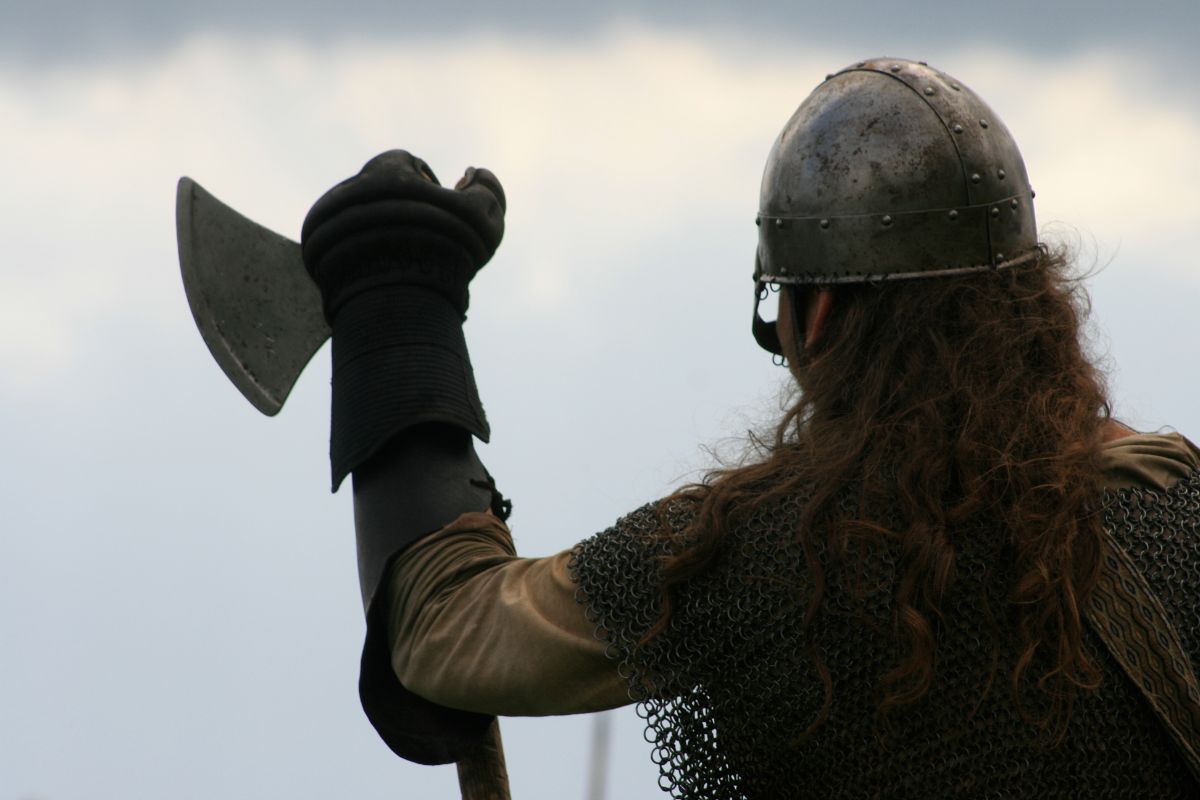We’ve all heard of Ragnar Lothbrok and Ivar The Boneless, but many other well-known Viking rulers will sound familiar. Not all of them were rulers of Scandinavia; Leif Erikson was in a party of explorers that landed in North America. Erik The Red colonized Greenland, while Ivar was a local ruler around York in England.
Viking society demanded that their Viking rulers were noble and good examples of the term “drengr,” a Norse word that meant brave or honorable.
Who Were The Most Famous Viking Kings?
1. Ragnar Lothbrok
Ragnar Lothbrok spread Viking authority across the British Isles and the Roman Empire during the 9th century.
Lothbrok became king of Denmark and Sweden and appeared in many Viking age poems and Icelandic sagas. According to the Saga About Ancient Kings and the Tale of Ragnar’s Sons, the legendary Swedish (and maybe Danish) king Sigurd Ring was his father.
His place and date are unknown, although most sources describe him living from about 800 A.D. until 845 A.D.

2. Ivar The Boneless
Ivar was “king of the Norsemen of all Ireland and Britain.” Old Norse and medieval Latin texts tell us Ragnar Lothbrok was the father of Ivar the Boneless.
Ivar was probably born about 830 A.D. He died around 873 A.D. in Dublin, Ireland.
In 865 A.D., Ivar created and was the chieftain of the Great Heathen Army that fought against the Anglo-Saxon Heptarchy of East Anglia, Essex, Kent, Mercia, Northumbria, Sussex, and Wessex.
Legend has it that Ivar fell victim to a curse upon his mother, Aslaug. Scholars have postulated that he had no legs, legs that had no bones, or just legs with brittle bones.
Despite this crippling complaint, Ivar was said to be an accomplished military tactician and proficient with a bow and arrow. He invaded England with his brother to take revenge on King Ælla of Northumbria for the king defeating and killing his father, Ragnar Lothbrok.
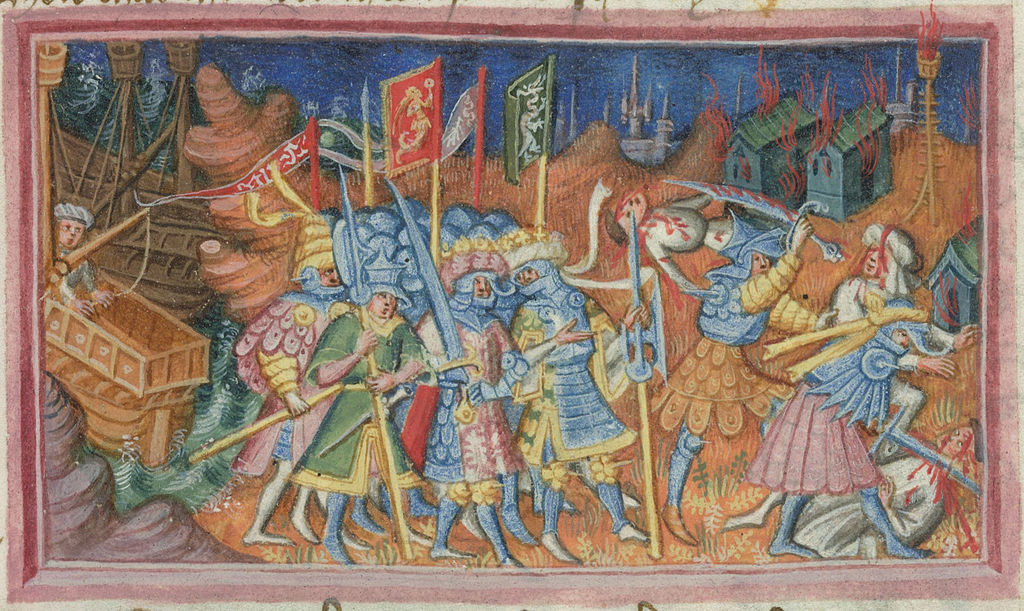
3. Harald Hardrada
Harald Hardrada (or “Hard Ruler”), half-brother of St. Olaf, is often described as the last great Viking.
After seeing his half-brother killed at the battle of Stikelstad, Harald became a member of the Rus Vikings and later went to Constantinople to form part of the Varangian Guard.
He returned to Norway and joined the unsuccessful raid into England in 1066. The forces of the English king, Harold Godwinson, defeated Harald at the battle of Stamford Bridge in the East Riding of Yorkshire, England.
William the Conqueror’s Norman invaders defeated Godwinson’s weakened forces three weeks later at the battle of Hastings.
4. Erik the Red
The Norwegian explorer and founder of Viking settlements in Greenland, Erik the Red (or Erik Thorvaldsson), was Leif Erikson’s father.
Erik and his father, Thorvald, were both dangerous characters exiled for manslaughter. Thorvald had to leave Norway or face imprisonment, and Erik met the same fate around 980 A.D. when he lived in Iceland.
With no alternative but to travel, Erik journeyed west and colonized Greenland around two years later. He established settlements all over the country before founding “Eriksfjord” and living there.
Erik is credited with actually giving Greenland its name.
5. Leif Erikson
Leif Erikson was a Norse explorer reputed to be the first European to discover North America.
Icelandic texts from the 13th and 14th centuries mention him making landfall around 1,000 A.D. Columbus didn’t arrive until 1492!
The Saga of Erik The Red tells how Erikson’s ship was supposed to be traveling to Greenland, but a storm blew them off course, leaving them around the Gulf of St. Lawrence in Newfoundland. Erikson’s party called the area “Vinland,” presumably because of the grapes and berries they found there.
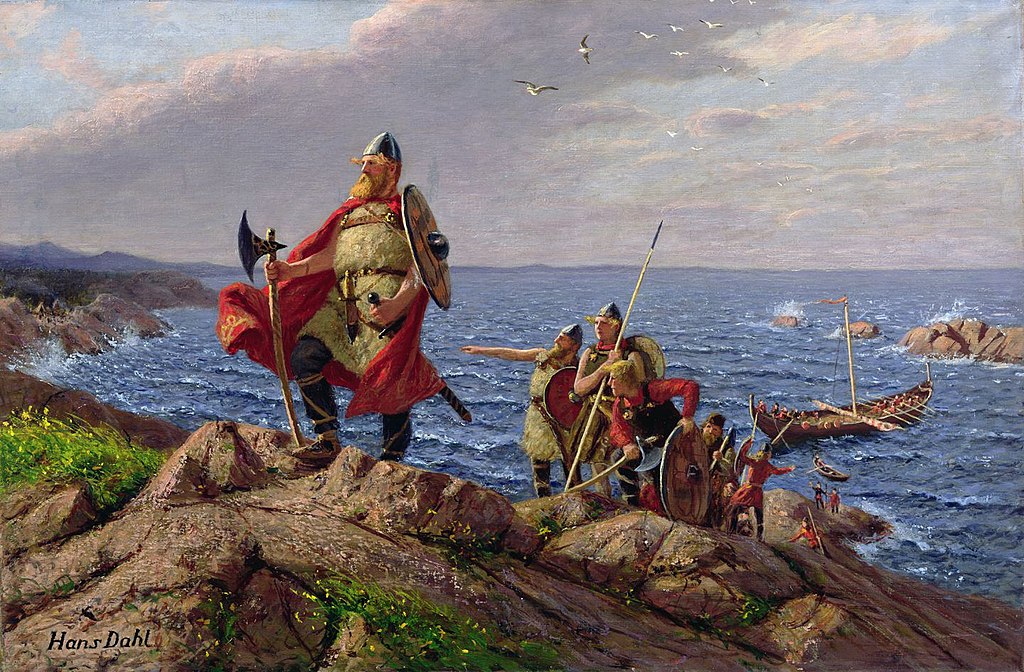
6. Harald Fairhair
Harald Fairhair became the first true King of Norway and reigned for nearly 60 years from 872 to 930!
His sons, Haakon the Good and Eric Bloodaxe, took the throne after him.
The English King Alfred defeated him at the Battle of Edington in 878.
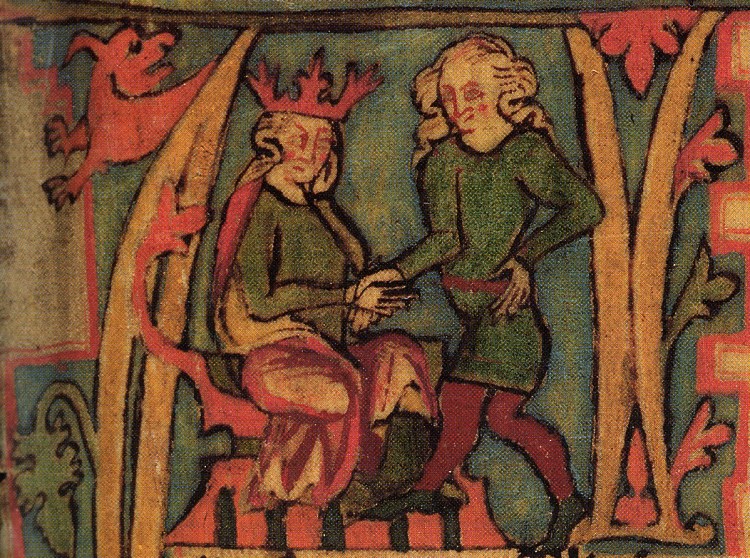
7. William The Conqueror
William the Conqueror was distantly related to the Viking ruler Rollo (later to become the Duke of Normandy).
William became the first ruler of Normandy, France, and defeated the army of the English King Harold Godwinson at the battle of Hastings in 1066.
8. Olaf Tryggvason (or Trygvasson)
Trygvasson was a Viking king who failed to force Christianity on Norway.
Other Famous Viking Rulers
Cnut The Great (or Canute) ruled over a large three-nation kingdom called “The North Sea Empire.” Although Cnut was a Christian, he commanded with an iron fist.
He is famous in Britain for sitting on his throne on the seashore and commanding the tide not to come in.
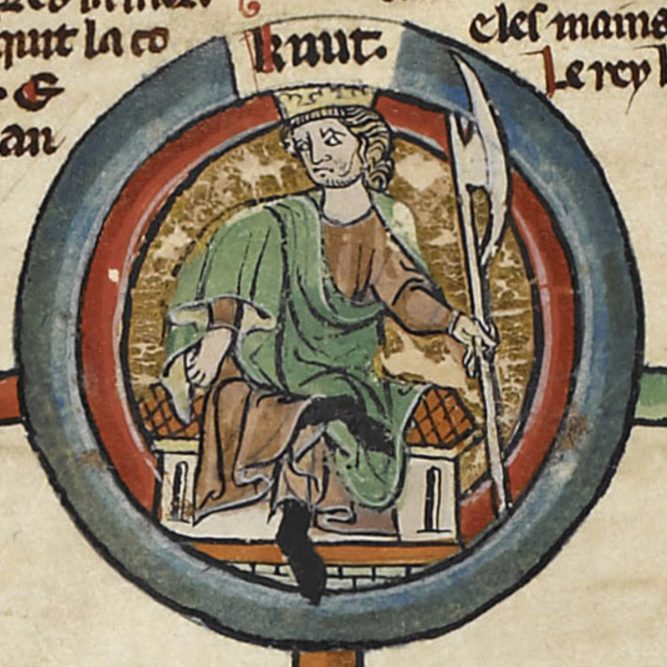
Cnut’s father, Sweyn Forkbeard, also ruled England. However, his reign lasted only five weeks and he was never crowned. His epithet came from his long, forked beard.
Sweyn became King of England in 1013 when he defeated Ethelred (or Aethelred), who fled to Normandy.
Sweyn was the son of Harald Bluetooth, also a king of Denmark. The wireless connectivity we know so well today adopted his surname.
*Make sure to also check my article on famous Viking men and female warriors throughout the Viking Age.
Who Was The First Viking King?
The first king of Norway was Harald Fairhair (860-940). Britain’s first Viking king of England was Sweyn Forkbeard. He was ruler for only five weeks.
What Did The Vikings Want From Their Viking Kings?
The Old Norse were suspicious of centralized rule, so most Viking rulers were localized kings, chieftains, or “jarls.”
According to some sources, Harald Fairhair ruled for 70 years. He lasted so long due to his awareness of his limitations and what he could and couldn’t achieve.
Viking society placed honor in high esteem, and it is likely that this quality, along with bravery and wealth, would elevate an individual to the ruling class. Generosity was regarded as a strength.
Rígsþula tells how Rígr (Heimdall in disguise) created the three classes of Norse society.
The lowest class was called Þræll (slaves), the second was Karl (freemen), and the third, and highest, were jarl (earls). Jarls were educated farmers and landowners and learned the use of weapons and warfare.
Other sources, such as runestones and sagas, confirm the tales of the Rígsþula.
Icelandic settlers created a society and government without rulers and with only two classes: free and not free.
What Did It Mean To Be A Viking King?
As we have seen, until Harald Fairhair, no Viking “king” had ruled over the whole nation. As an egalitarian society, Norse rulers were regarded as “first among equals” and not as special or sacred.
Kings had to protect their realms, so they attracted the strongest supporters and kept them happy and in their employ with gifts. The idea of deference was alien to Norsemen.

